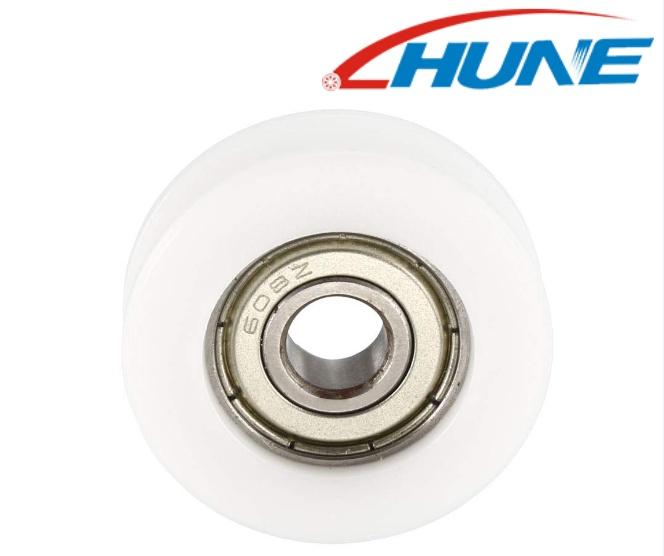Selecting the right Plastic Pulley for your application is crucial for ensuring efficiency, durability, and optimal performance in your mechanical systems. Whether you're working in industrial machinery, automotive systems, or small-scale operations, the choice of plastic pulley can make a significant difference.
Understand Your Application's Requirements
The first step in selecting a plastic pulley is understanding the unique requirements of your application. Consider factors like load capacity, speed, environmental conditions, and system design. Plastic pulleys are typically used in applications where weight reduction, corrosion resistance, and reduced friction are critical. Evaluate how much weight your pulley needs to carry and whether the application involves high-speed rotations or continuous motion.
Material Selection for Optimal Performance
Plastic pulleys come in various materials, each offering distinct advantages depending on the application. Common materials for plastic pulleys include nylon, polypropylene, acetal, and polycarbonate.
-
Nylon is known for its high wear resistance and is ideal for applications requiring long-lasting durability.
-
Polypropylene offers excellent chemical resistance, making it suitable for harsh environments where exposure to chemicals is a concern.
-
Acetal is a high-performance plastic known for its precision and low friction, perfect for applications that demand accuracy.
-
Polycarbonate provides high impact resistance and is ideal for situations where the pulley will experience heavy mechanical stress.
The material selection should align with the type of load, exposure to chemicals, or operating temperature your pulley will encounter.
Size and Design of the Pulley
The size of the plastic pulley is another critical factor in its selection. Ensure that the pulley's diameter, width, and groove design match the specifications required for your system. Plastic pulleys often come with different groove types, such as V-grooves or U-grooves, designed to accommodate specific belt types and tension levels.
Choosing the correct size ensures that the pulley will function efficiently without slipping or causing unnecessary wear on the belt. It’s essential to match the pulley's size with the overall design and operational requirements of your system.
Environmental Considerations
Consider the environmental factors that will affect the pulley’s performance. If your system will be exposed to high temperatures, moisture, or chemicals, you will need to select a plastic pulley material that can withstand those conditions. Many plastic materials offer corrosion resistance, which is especially important in environments prone to humidity, chemicals, or salt exposure, such as in the food processing industry or outdoor machinery.
Some materials, like polycarbonate, are better suited for high-impact environments, while others, like nylon, offer improved performance in low-temperature settings. Be sure to account for these factors when choosing the appropriate plastic pulley for your application.
Friction and Noise Reduction
In many applications, reducing friction and noise is crucial for improving system efficiency and extending the life of your equipment. Plastic pulleys inherently have lower friction compared to metal pulleys, which can contribute to quieter and smoother operation. If noise reduction is a priority in your system, opt for materials known for their ability to dampen sound, like nylon or acetal.
Additionally, consider pulleys that are designed with integrated bearings, as this can further reduce friction and enhance the overall performance of the pulley system.
Cost and Long-Term Maintenance
While plastic pulleys generally have a lower upfront cost than metal pulleys, consider the long-term cost-effectiveness of the material chosen. Some plastic materials may wear down faster than others under heavy load or continuous operation. It's important to balance the initial cost with the longevity of the pulley.
Choosing a plastic pulley that offers a good balance between cost, durability, and performance can help reduce maintenance costs in the long run. Regular maintenance, such as cleaning and lubrication, can extend the life of plastic pulleys and ensure they operate at peak efficiency.
Compatibility with Other Components
Ensure that the plastic pulley is compatible with other components in your system, such as belts, shafts, and bearings. Using the wrong material or design could lead to inefficient operation or excessive wear on other components. Compatibility with the system is crucial to prevent early failure or unnecessary downtime.
Choosing the right plastic pulley for your application is a vital step in optimizing performance, reducing costs, and ensuring longevity. By understanding your application's requirements, selecting the appropriate material, considering environmental conditions, and focusing on long-term durability and cost-effectiveness, you can make an informed decision that meets your needs. Whether you are replacing an old pulley or designing a new system, taking these factors into account will help you choose the perfect plastic pulley for your application. Click hunepulley.com to know more information.



